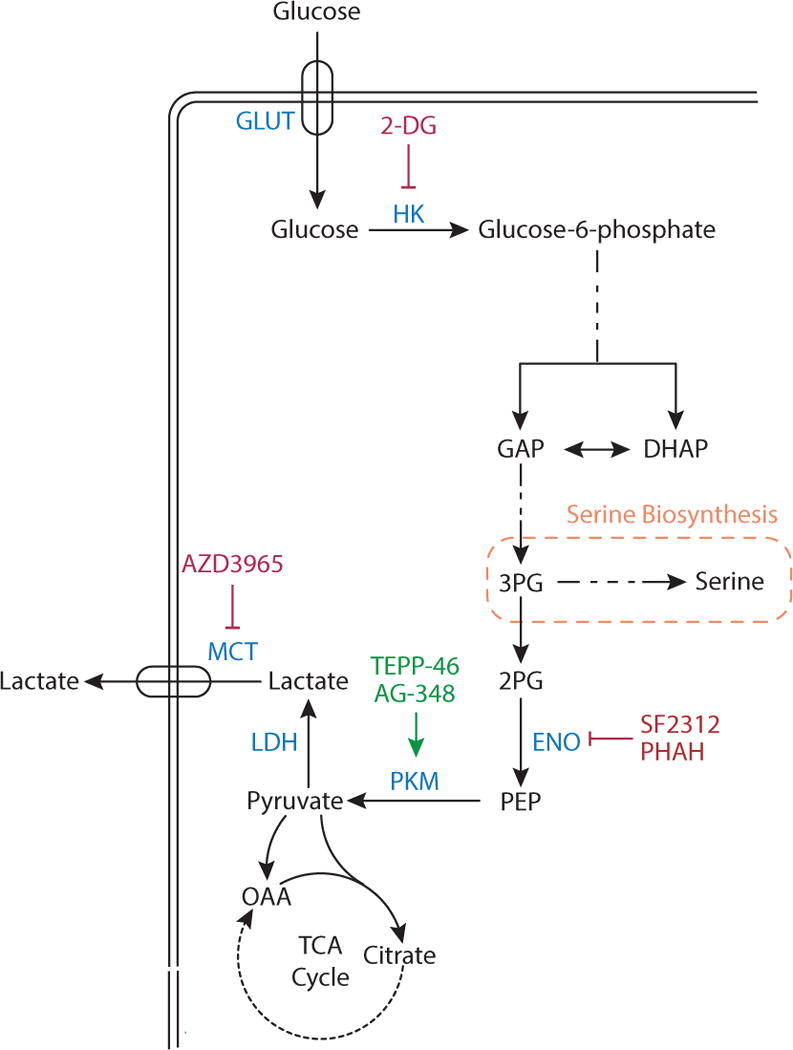Figure 3. Glycolysis.

Glucose is imported in cells by one of several glucose transporters (GLUT). Glucose is phosphorylated by hexokinase (HK), a step that can be competitively inhibited by the compound 2-deoxyglucose (2-DG). In a later step of glycolysis, glucose carbon is cleaved into two interconvertible three-carbon units, dihydroxyacetone phosphate (DHAP) and glyceraldehyde 3-phosphate (GAP). Downstream of GAP, 3-phosphoglycerate (3-PG) is converted to 2-phosphoglycerate (2-PG), and the enzyme enolase (ENO) generates phosphoenolpyruvate (PEP) from 2-PG. ENO activity can be inhibited by the compounds phosphonoacetohydroxamate (PHAH) and SF-2312. PEP is converted to pyruvate by pyruvate kinase (PKM), which can be activated by the drugs TEPP-46 and AG-348. Pyruvate can be oxidized in the TCA cycle, or it can produce lactate via lactate dehydrogenase (LDH), with lactate excreted by monocarboxylate transporters (MCT). MCT isoform 1 can be inhibited by the compound AZD3965.
